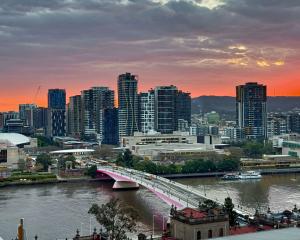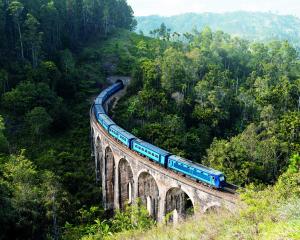Easter Island is a small isolated territory in the south-eastern Pacific that is shrouded in mystery and controversy about its past.
The island is famous for the 887 giant statues (called moai) dotted about the island, mostly on the coastline.
The statues were created by the early Rapanui native people and are responsible for Easter Island being named a Unesco World Heritage site.
It is the statues that have made Easter Island a tourist destination for the curious who want to understand their mystery.
The Rano Raraku are statues built on the hill that did not get transported down to the coast.
The Ahu Tongariki are 15 restored statues placed together with their backs to the sea.
They were toppled in the 17th century by tribal warfare.
In 1960, an earthquake followed by a tsunami separated the statues and altars from their bases.
They were restored in 1982.
At Te Pito Kura we saw the biggest statue erected on a platform.
It stood 10m high and weighed 80 tonnes.
The top weighs an additional 12 tonnes.
The statue is reputed to have been ordered by a widow in memory of her husband.
It is the largest statue known to have come out of the quarry after 1838.
The history of Easter Island is rich and controversial.
Its inhabitants have endured famines, epidemics, civil war, slave raids, colonialism and near deforestation.
Their population has declined dangerously more than once.
Trees are sparse on modern Easter Island and most shrubs and trees are introduced.
The native trees were cut down in the process of erecting the statues and dragging them from the quarry to their final destinations on ceremonial sites.
Easter Island is one of the world's most isolated inhabited islands.
Its closest inhabited neighbour is Pitcairn Island, 2075km to the west, and it lies 3510km or 4hr 45min flying time to mainland Chile to the east.
Shaped like a triangle, the island is 24.6km long and its widest point is 12.3km.
It has an area of 163.6sq km.
Petroglyphs are ancient pictures carved into rock, and Easter Island has one of the richest collections in all Polynesia, with 1000 sites and more than 4000 petroglyphs.
We stopped at a petroglyph site at Papa Vaka that reflected the ancient Rapanui's deep concern about the sea and its resources.
Etched into the rock was a carving of a 12m-long canoe, fish hooks, marine creatures like tuna and shark.
We also saw the remains of a prehistoric village at Akahanga and the platform (ahu) that was used for ceremonies.
There was a mixture of clans and families in the old society.
It is the best preserved of the ancient villages with earth ovens and boat houses.
There are no natural harbours on Easter Island and ships must anchor offshore and wait for calm seas to unload goods on to barges.
There is a lot of pounding surf and strong waves that that local children surf.
They are also skilled with motor-driven boats that are able to negotiate the strong waves and get safely to shore.
A feature of the island is the number of tame horses that wonder freely on roads and over fields.
They are traffic savvy and pull over to the left to let cars pass.
The farmers are skilled horsemen.
We saw a man with flowing hair on a horse driving cattle along.
Easter Island
Population: 4888.
Capital: Hanga Roa.
Government: Special territory of Chile (1888).
Provincial Governor: Carmen Cardinali.
Area: 163.6sq km.
Currency: Peso.
Religion: Christianity.
Official languages: Spanish, Rapanui.
Bonaire
It has a reef-lined coast that appeals to divers and is also famous for wind-surfing.
We stayed at the Diva Flamingo Beach Resort in the capital of Kralendijk and the other guests were either from the Netherlands or Germany.
The hotel has two swimming pools and a coral beach for snorkelling.
It has a humid climate and temperatures reached 32degC during our stay.
Tourism is the lifeblood of Bonaire but the diving industry is concerned about the invasion into its waters of the Indo-Pacific red lionfish.
The first confirmed sighting and capture of a lionfish occurred at Bonaire in October 2009.
It has few known natural predators and lionfish pose a major threat to coral reef ecosystems in the Caribbean.
The Bonaire authorities have alerted the local dive operators and dive staff about the non-indigenous species.
The lionfish has venomous dorsal, ventral and anal spines which deter predators and cause painful wounds in humans.
The other problem on the island comes at night when mosquitoes come out.
We wore hats, longs and covered our arms during dinner at the open air restaurant beside the ocean.
The hotel supplied insect repellant.
We were able to watch the small and big fish fight for bread and other food dropped into the water by guests.
There was a frenzy of activity in the water as the fish fought for titbits.
The small fish were quicker off the mark and monopolised the food.
Rental cars are plentiful and popular and we travelled around the island to the village of Rincon with its Dutch-styled church, saw windmills moving slowly in the wind, dive sites, an oil tanker, a lighthouse and visited the salt stacks.
Salt is a significant export and there are numerous salt hills.
Salt gets loaded by conveyer belt on to a freighter at a rate of 2000 tonnes an hour.
The salt stacks, windmills, lizards, green parrots, pink flamingos and forests of cacti on a coral foundation are features of Bonaire.
Some people model cacti into fences at their homes.
When we visited the Washington Slagbaai National Park we saw the soft, warm wind gently caress the cacti that swayed gently.
At another place, the cacti lined the road and were like royalists cheering for the Queen.
The cicada choir reached a crescendo as we passed by.
We climbed Mt Brandaris (241m), the highest point on the island, to look at the view.
It was hot as we followed the painted yellow markers through the cacti and akasha forest .
The refreshing warm wind cooled the temperature as we climbed up the tricky slopes to the summit.
As we descended we met a ranger who was concerned that we were running late and might not get off the mountain in time to clear the park gate that was locked at 5pm.
We got a lift to our car and they showed us the quick way back up a steep gravel road.
Bonaire
Population: 14,500.
Capital: Kralendijk.
Government: Municipality of Netherlands (2008).
Governor: Glenn Thode.
Area: 294sq km.
Currency: Netherlands Antillean guilder.
Religion: Christianity.
Official languages: Dutch, English, Papiamento.












